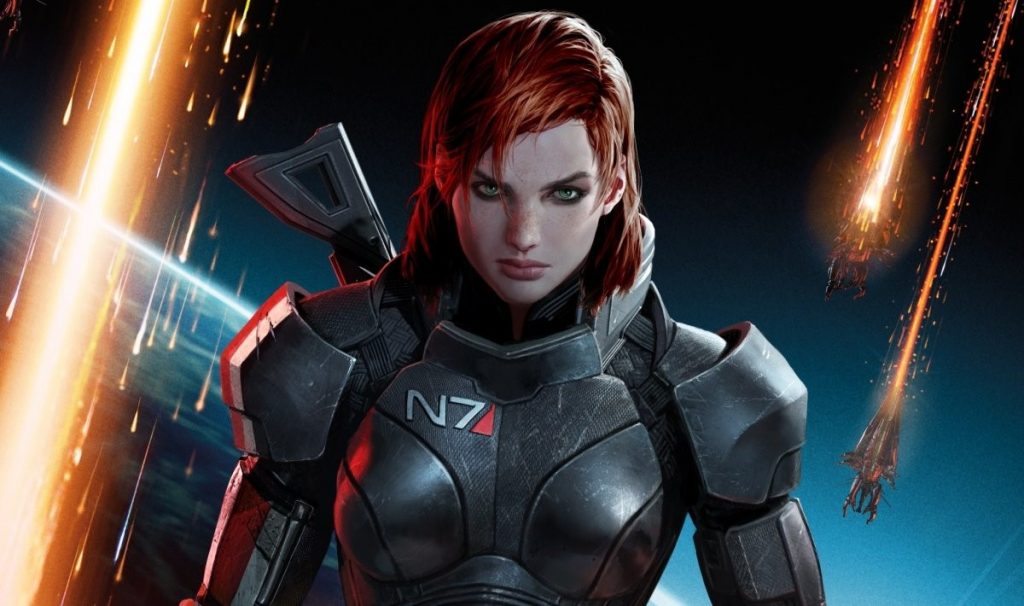If we look at women in past video game history, women have not gotten the respect they deserve until now. In order to sell games and appeal to the largely male straight market, women are drawn disproportionately with nonexistent waists, large chests, or tight clothing. For instance, picture Lara Croft’s short shorts and crop top in Tomb Raider, Samus Aran’s skin tight blue suit, or just everything about Mileena in Mortal Kombat.
This trope is so common that it is mocked in Jumanji: Welcome to the Jungle. Karen Gillian’s character, Martha, finds that upon entering the game, she is dressed in a crop top and shorts. Her character is self aware and mocks this by saying,“Why am I wearing this outfit in a jungle? Tiny, little shorts and a leather halter top. I mean, what is this? Why am I wearing this outfit in a jungle? Tiny, little shorts and a leather halter top. I mean, what is this?”.
Today video games have more flushed out female characters. Their story arcs actually showcase character development. These female characters progressively have more substance to them. A prime example of this is Senua, the Celtic warrior, in Hellblade. Firstly, she is highly dependent on herself. She embarks on a quest alone to negotiate with the Goddess of Death to save her beloved Dillion from the Viking’s ‘Hel’, after her own homeland is destroyed. Despite her own heartache and depression, she ventures on, showing a strong and determined female force. Even more notably, a female character is used to portray mental illness. She has psychosis, triggered by the trauma she experienced, and forced to navigate not just through her perilous quest but her hallucinations and blurring of reality as well. Instead of being a background character, damsel in distress, or simply eye candy, Senua is her own hero, having no one but herself to make it through her difficult journey.
Having female characters that drive their own storylines is a tremendous feat. In fact, some may say that video games have come a long way, and there are more women in video games than ever before. This ideal scenario, sadly, is not rooted in reality.
According to Wired.com, the number of female protagonists from 2015 to 2019 actually decreased.
For each year respectively, the percentage of female protagonists was 9%, 3.4%, 7%, 8%, and 4.8%. 2015 has the largest percentage because the Electronic Entertainment Expo, E3, took gamers’ desires to combat sexism in video games, and thus new releases featured strong and dominant female leads. As the years went on, clearly by 2019, video games struggled to keep women as the protagonists. To put these numbers into perspective, “Of the 126 games we tallied from the E3 events held by Microsoft, Nintendo, Bethesda, Ubisoft, Square Enix, and EA, as well as the annual PC Gaming Show, a paltry six centered exclusively female protagonists, while almost five times as many, 28, centered male characters.
Today, women are equally likely to play video games as any male would. Yet these games have the ability to make female gamers have low self esteems or even depression because no one looks like the hypersexualized characters.
On top of that, women in the gaming community are not always welcomed, facing backlash and abuse from anonymous players.
Since it is becoming more common for women to play video games, they should be able to play games that adhere to their game and character design preferences. Even research that is conducted for designing and testing video games is done with male players in mind. Yes, a woman can choose to play a violent game filled with violence. The point is a woman should be able to play a game that appeals to her just as much as a boy already can. At the same time, there should be alternatives, as “85%” of games in the market are combat games, according to The Wired. Thus, it is necessary to create characters that women can look up to and see themselves in, rather than making a character only valued for her looks. Here’s a tip for video game designers: If you think your game won’t sell unless you appeal to boys, then you need to stop designing and start listening to players today.
